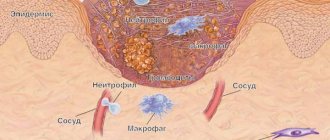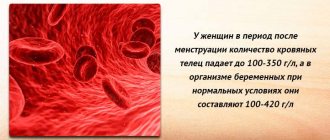Detection of drugs in the blood is necessary for issuing a certificate for a driver’s license, undergoing an examination at the military registration and enlistment office or examination for the fact of drug intoxication. Read more about the features of laboratory testing further in our article.
- Read in the article:
- How to test blood for drugs
- Time it takes for drugs to leave the blood
- How long does heroin last?
- Drug elimination time speed
- Detection of spice in blood
- What drugs can be detected in the blood
- Types of Blood Drug Tests
- Blood from a vein
- Antibodies to drugs
- General blood analysis
- Blood for psychotropic substances
- Quarterly test
- CTI blood test
- Drug test
- How to get tested for drug addiction?
- Drug test results
- What affects the rate of elimination from the blood
- When is a blood drug test needed?
- Research for the military registration and enlistment office
- Blood test at a drug dispensary
- Blood test for traffic police
- Blood detoxification from drugs in
- Plasmapheresis
- Hemodialysis
- Hemosorption
How to test blood for drugs
Drug use can be determined in a laboratory or using pharmacy tests.
- Express tests
. Sold in pharmacies and shaped like stripes. The test is dipped into the person's urine or wetted with saliva. If biological fluids contain drug metabolites, the strip changes color. Helps to find out the result within 15-20 minutes, but has a limited spectrum of drug detection; - Laboratory examination of urine
. A person takes a urine test, which is exposed to reagents. The analysis helps detect 5-10 types of drugs in the body; - Blood analysis
. A venous blood test helps determine the use of psychotropic substances. Achieved using reagents. The result can be found out 2-3 days after collection.
Platelet count according to Fonio: reference values and deviations from the norm
The analysis is carried out using a special device - a hematology analyzer, or platelets are counted manually under a microscope. Reference values depend on the patient’s age: for newborns they are 99 - 421 *10^9/l, for adolescents 10-15 years old - 150 - 450 *10^9/l, for people over 15 years old - 180 - 320 *10^ 9/l.
If counting platelets using the Fonio method showed an increase in their concentration (thrombocytosis), this may be a sign of acute and chronic inflammatory processes, major injuries, disruption of the hematopoietic system, renal failure, autoimmune pathologies, tuberculosis.
The danger of an increase in platelets lies in the risk of thrombus formation - blood clots that can circulate with the bloodstream throughout the body. If such a clot blocks a vein or artery, occlusion (obstruction) of the vessel occurs. As a result, the organ does not receive enough oxygen, ischemia occurs, and temporary or permanent impairment of its functions may develop. The most dangerous are pulmonary and cerebral thromboembolism, which can lead to pulmonary infarction and stroke. Therefore, if a patient is at risk of developing blood clots, he needs to regularly undergo a blood test with platelet count according to Fonio.
If the study revealed a decrease in the number of platelets, this may indicate an increase in the rate of platelet destruction or the development of thrombocytopenic purpura. Please note: counting the platelet count in a general blood test may show a decrease in results (up to 75-150 * 10^9/l) during pregnancy.
Time it takes for drugs to leave the blood
A lot of factors influence how long drugs stay in the body. The duration of natural elimination of psychoactive substances also depends on the type of drugs used, the health status of the drug addict and the frequency of use of surfactants.
How long does heroin last?
Initial use allows heroin to be detected in the blood within 15 hours. With chronic use, the level of toxins in the body remains static. It is important to note that modern diagnostic methods help detect traces of opium drugs six months after taking them.
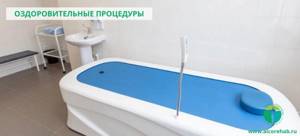
Drug elimination time speed
Amphetamine and other stimulants are eliminated from the body within 8-34 hours: the exact period depends on the intensity, frequency of use of the “speed”, and the health status of the addict.
Detection of spice in blood
Spice remains in the bloodstream for 20-48 hours. Spice metabolites can be detected in a drug laboratory using blood sampling or a rapid test. In some cases, a trichological analysis (hair examination) is prescribed.
Thrombocytosis in children
Thrombocytosis is an increase in the number of platelets in the blood to values several times higher than normal. Most often, thrombocytosis is a consequence of a viral or bacterial infection. In particularly severe cases, an increase in blood cells may indicate the development of cancer.
How to determine: symptoms
The symptoms of thrombocytosis are similar to the clinical manifestations of thrombocytopenia, although there are still some differences. If a child has at least one of the listed signs, you should immediately consult a doctor and take a blood test.
Symptoms of thrombocytosis in childhood:
- frequent and severe nosebleeds;
- blue skin;
- the appearance of subcutaneous hemorrhages;
- itching and burning in certain areas of the skin;
- tingling sensation on the skin;
- cold hands and feet at a comfortable ambient temperature;
- dyspnea;
- increased heart rate.
The child may also complain of frequent headaches. In some cases, pressure surges and blood clots may form.
Causes
To correctly determine the cause of the increase in platelets, it is necessary to diagnose what type of thrombocytosis is developing in the child. The treatment regimen and tactics for managing a small patient will depend on this.
| Type of thrombocytosis | Causes |
| Clonal | Bone marrow stem cell defects |
| Primary | Pathologies in the functioning of bone marrow cells, the formation of several sites of hematopoiesis |
| Secondary |
|
Recommendations for thrombocytosis
- Consult your doctor about the use of products that contain acetylsalicylic acid (for thinning the blood).
- During the day, offer your child compotes and fruit drinks made from blueberries, lingonberries and cranberries as often as possible.
- Monitor the iodine content in the body, and if there is a deficiency, ensure sufficient consumption of fish and seafood.
- If the child does not have problems with the gastrointestinal tract, it is recommended to add fresh garlic and ginger (in minimal quantities) to food.
- In the morning, you can give your baby cocoa without sugar (a prerequisite is that the drink must be consumed on an empty stomach).
- Olive and flaxseed oils, as well as foods rich in magnesium and B vitamins, should be mandatory products in a child’s diet for thrombocytosis.
- Avoid dehydration (the water norm for a child is 1 liter per day).
- Increase the amount of fruits and vegetables (tomato juice and lemons are especially useful).
What drugs can be detected in the blood
Experts recommend donating blood within seven days after your last drug use. Despite this, you can go to the laboratory much earlier: modern diagnostic methods help determine the fact of drug addiction even six months after use. Using blood sampling, you can identify breakdown products of drugs of the following groups:
- Opium group drugs (heroin, morphine);
- Barbiturates (phenobarbital);
- Cannabinoids (hashish, anasha);
- Hallucinogens (LSD, psilocybin mushrooms);
- Stimulants (cocaine, methamphetamine);
- Salts and spices.
Modern diagnostic methods cover almost all possible types of drugs. This means that if you suspect drug use by a loved one, you should undergo a full and timely diagnosis.
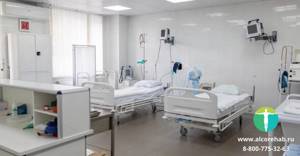
License and certificates:
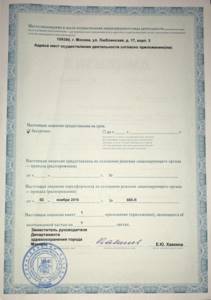
Antibodies to drugs
The presence of antibodies in the blood indicates long-term use of psychoactive substances. Due to the frequent intake of psychoactive substances in the body, antibodies are gradually produced. Their task is to lengthen the time toxins remain in the circulation system and prevent the drug from entering the brain. Determining antibodies is an important way to detect drug addiction.
General blood analysis
A general analysis does not help determine the presence of drug metabolites in a person’s blood. This type of analysis is relevant only for monitoring health status: taking into account the level of hemoglobin, leukocytes, and so on.
Blood for psychotropic substances
To obtain reliable research data, a person must comply with the requirements for taking tests: eliminate the consumption of food, certain medications, give up nicotine and alcohol.
Diagnosis of atherosclerosis
The diagnosis is based primarily on the results of laboratory tests and data from instrumental research methods.
A conversation with a patient only allows us to identify risk factors for the development of diseases and, together with an examination, as well as consultation with other specialists, suggest which organs have already been affected by the disease. Diagnosis of atherosclerosis necessarily includes:
- Blood chemistry.
- Ultrasound of the heart and blood vessels.
- Electrocardiography.
A high predisposition to the development of the disease is indicated by changes such as an increase in the concentration of total cholesterol, triglycerides, low- and very low-density lipoproteins, and a decrease in the amount of high-density lipoproteins.
Innovative risk factors for atherosclerosis include C-reactive protein (CRP), apolipoproteins A1 (apoA1) and B-100 (apoB), some polymorphisms of endothelial synthase genes (NOS3G894T, NOS3T(-786)C) and blood coagulation factors FV and FII. To obtain accurate results of a blood test for atherosclerosis, three days before the test you should give up fatty, cholesterol-rich foods, and 8-10 hours before, eat nothing at all and drink a lot of liquid. 30 minutes before the test, you should avoid strong emotional stress, stress, and do not smoke.
Echocardiography clearly shows signs of atherosclerosis of the heart valves and aorta. According to indications, ultrasound scanning of the brachiocephalic, transcranial, and arterial vessels of the lower extremities is also performed.
Reflects disturbances in heart rhythm and electrical conductivity of the organ. Exercise testing may be performed to detect exertional angina.
The standard list of laboratory tests also includes a general clinical blood test and a general urinalysis.
Additionally, for the purpose of differential diagnosis, blood tests for the level of fibrinogen, homocysteine, antibodies to cardiolipin (IgG and IgM), and lupus anticoagulant may be recommended. To visualize atherosclerotic plaques, according to indications, angiography is used - an X-ray examination with the introduction of a contrast agent. In case of preparation for surgery on the heart vessels, coronary angiography is performed.
The “gold standard” for diagnosing pathological changes in the arteries of the brain and parenchymal organs is spiral computed tomography with contrast.
Often such patients are recommended to consult an ophthalmologist. Fundus ophthalmoscopy reveals signs of atherosclerotic damage to small retinal vessels.
Treatment calculator
Field score:
Total score:
Patient age
Length of use
What he uses Has he previously undergone treatment Consent to treatment Concomitant diseases Employment
Waiting for values to be entered
Quarterly test
This analysis helps detect stimulants, opium and other drugs in the human body 3 months after use. The quarterly test is used to determine drug addiction and is not suitable for the first test.
CTI blood test
A chemical-toxicological study is aimed at issuing a certificate in the following cases:
- Negative result for testing of narcotic substances and their derivatives;
- Positive result with a written refusal of the person to confirm the CTI.
The analysis helps to identify traces of cocaine, methadone, heroin, amphetamine, barbiturates, cannabis, ethanol and other surfactants.
Drug test
In the laboratory you can take a test to determine cannabinoids, opium drugs and barbiturates in the body. Blood is drawn and urine is examined using screening tests. Spectral analysis helps determine the chemical spectrum of a toxic substance in the body.

Thrombocytopenia: symptoms and treatment
How to determine?
If a laboratory blood test reveals a significant decrease in the number of platelets compared to age norms, the child is diagnosed with thrombocytopenia.
This condition is dangerous for a small organism, since if the epithelium is damaged or internal bleeding occurs, the blood cannot clot, which leads to significant blood loss and a sharp deterioration in well-being (in some cases, even death).
The only way to stop the bleeding may be a transfusion of donor blood with a high platelet count.
To prevent serious consequences, it is important to know the symptoms and signs of thrombocytopenia in children. These include:
- frequent nosebleeds;
- bleeding gums, independent of tooth brushing;
- bruises and small hematomas on the body;
- a small rash that occurs mainly on the legs, ankles, thighs and buttocks (appears in 100% of children with this diagnosis);
- blood streaks in feces and urine.
Separately, it is worth paying attention to cases when even with minor damage to the skin (for example, with a shallow cut), a large amount of blood is observed. This sign almost 100% indicates developing thrombocytopenia.
Causes
A decrease in platelets is not always caused by internal pathologies. There are also external reasons for which signs of thrombocytopenia may be observed in children.
What affects the rate of elimination from the blood
The rate at which psychoactive substances are eliminated from the body is influenced by the following factors:
- Metabolic rate . In the presence of endocrine diseases, the duration of elimination increases. In addition, drug metabolites are often retained in adipose tissue. This means that heavy addicts take a little longer to remove drugs from their bodies;
- Presence of chronic pathologies;
- Duration and frequency of drug use . The body of people with chronic drug addiction is subject to constant intoxication, as a result of which surfactants take a long time to be eliminated;
- Surfactant dosage . The larger it is, the more intense the intoxication.
Detoxification at a drug treatment clinic will help remove drug metabolites from the body so that you can regain your well-being and begin further stages of drug addiction treatment.
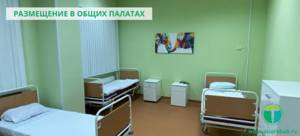
When is a blood drug test needed?
People may need to take a substance test in several cases. During examination at the military registration and enlistment office or to obtain a license, as well as for private needs. If a person is suspected of using drugs, a diagnostic test of blood, urine or hair helps confirm or refute the suspicions.
Research for the military registration and enlistment office
The military registration and enlistment office provides a referral for examination to a drug treatment clinic. In some cases, the referral is issued by a psychiatrist conducting an examination of conscripts (if the young man was found to have inappropriate behavior).
Based on the research data, a verdict on the suitability of the conscript is issued. Persons suffering from drug addiction are not called up for service. If drug addiction is suspected, an examination is carried out in an outpatient clinic.

Blood test at a drug dispensary
Blood sampling at a narcological clinic can be carried out in several cases:
- Donating blood for the military registration and enlistment office;
- Help for obtaining rights;
- Examination when participating in criminal episodes;
- Personal desire of a person.
Blood test for traffic police
Drivers are required to donate blood to receive a certificate. If the CDT concentration exceeds 1.2%, the test is considered positive. If metabolites of psychoactive substances are detected, the person is sent for additional examination to a narcological clinic. During additional diagnostics, the fact of the development of concomitant diseases associated with taking narcotic substances (nervous, mental disorders, etc.) is established.
If the fact of a driver’s drug addiction is controversial or conflicting, the conclusion is made by a medical commission.

Symptoms of atherosclerosis
For years and even decades, the disease can occur without clinical manifestations.
Subsequently, signs of poor blood supply to various organs are observed. With atherosclerosis of the heart, the patient is bothered by “squeezing” pain behind the sternum during physical activity - angina pectoris, arrhythmia, a feeling of palpitations accompanied by shortness of breath, and the development of myocardial infarction is possible.
In case of damage to the abdominal vessels, there may be attacks of pain in the upper and middle parts of the abdomen, which are accompanied by increased gas formation and constipation.
Atherosclerosis of the cerebral arteries manifests itself in dizziness and short-term episodes of loss of consciousness, and tinnitus. As the disease progresses, a stroke may develop with its neurological symptoms - dizziness, headache, lack of coordination and disorientation, numbness or weakness of the muscles of the face, arms or legs of one side of the body, sudden speech disturbances, visual disturbances, prolonged unconsciousness.
Vascular thrombosis of the lower extremities can lead to numbness and discoloration of the skin of the legs, a crawling sensation, and muscle pain when walking - “intermittent claudication.” Subsequently, the skin becomes thin and dry, peels, nails thicken, difficult-to-heal trophic ulcers form, and frequent cramps appear.
The main symptom of renal artery disease is an uncontrolled increase in blood pressure, leading to drug-resistant hypertension.
How to speed up the elimination of drugs?
We assure you: it is impossible to falsify drug test data. Taking any medications or diuretics does not help remove toxins from the bloodstream, and if the authorized authorities have suspicions about your honesty, a trichological analysis will be prescribed.
Accelerating the elimination of psychotropic substances is necessary as the first stage of drug addiction treatment. Detoxification is combined with psychotherapy and symptomatic treatment to relieve acute conditions such as withdrawal or poisoning. Droppers, enterosorbents and specialized devices are used for detoxification.

Blood detoxification from drugs in
The drug treatment clinic “AlkoZdrav” carries out drug detoxification using modern equipment. We provide substance abuse treatment completely anonymously. The following features of the AlkoZdrav clinic are highlighted:
- Method of complex influence to achieve remission;
- Comfortable conditions in the wards;
- Use of high-quality medicines;
- Modern equipment;
- Participation of experienced psychotherapists;
- Help not only addicts, but also their relatives.
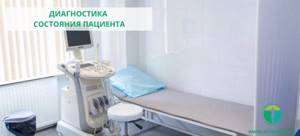
Plasmapheresis
Hardware method of purifying the bloodstream. Blood taken from the patient is purified using special membranes and returned to the bloodstream. The plasma is renewed while toxic substances are removed.
Hemodialysis
Hemodialysis is carried out using the so-called “artificial kidney”. The person is connected to a machine that removes toxic substances from the body and also restores water and mineral balance. The procedure takes 4-5 hours and helps restore well-being even after serious drug poisoning.
Hemosorption
In the process of hemosorption, the blood of the drug addict is taken. After collection, the blood is placed in a container with a sorbent. Under the influence of the sorbent, toxins are destroyed, and purified blood returns to the bloodstream.

